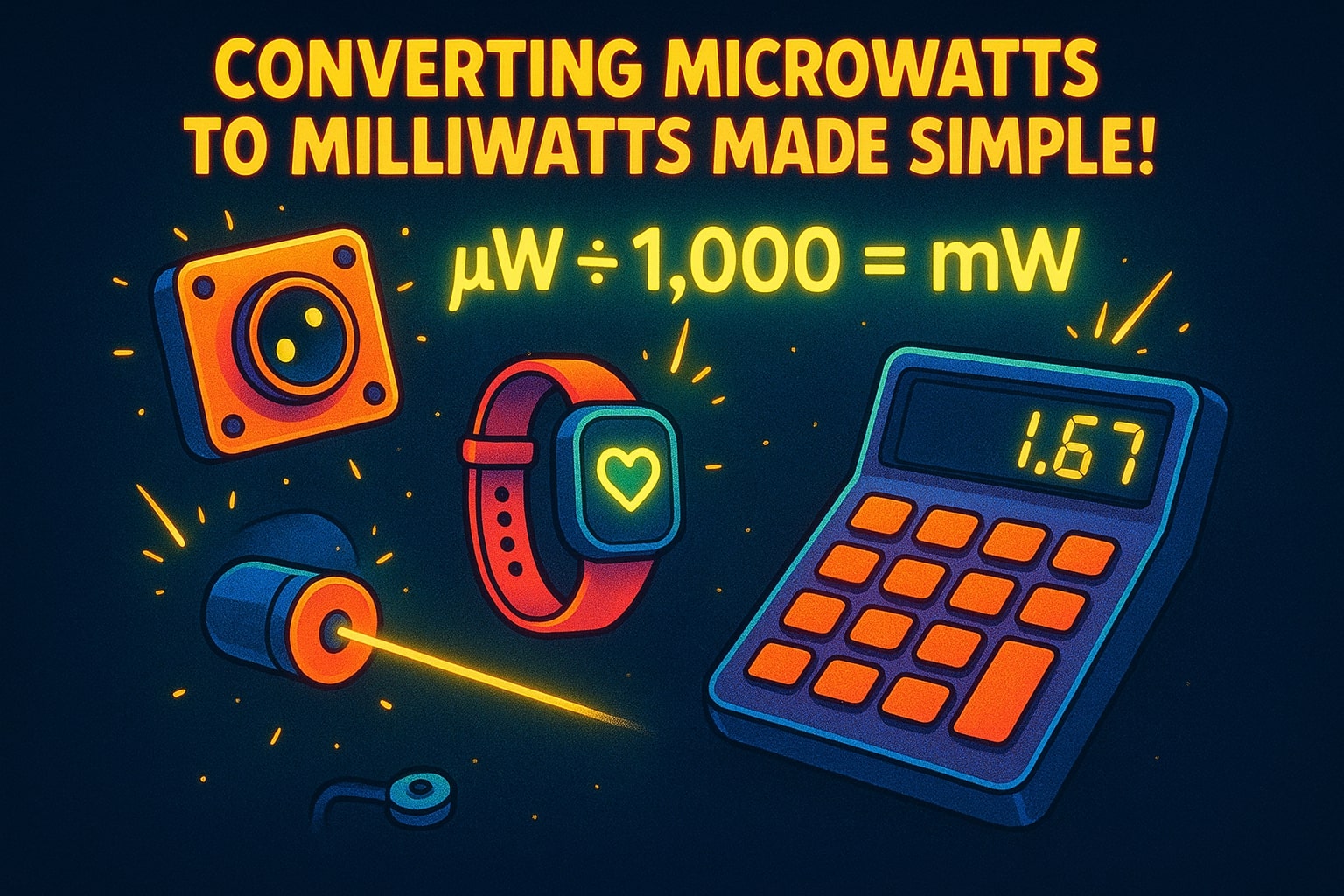Microwatt to Milliwatt – How to convert µW to mW
Need to convert microwatt to milliwatt? These two power units are used for measuring extremely low energy levels, especially in electronics, sensors, and microdevices. While the difference between them is significant — a factor of 1,000 — the conversion is simple because they’re both part of the metric system. Here’s how the math works, where these units show up, and why measuring power at this scale is crucial in today’s technology.

What is a microwatt (µW)?
A microwatt equals one-millionth of a watt (1 × 10⁻⁶ W). It’s used to measure tiny amounts of power, often in scientific research, biomedical devices, and energy-harvesting systems.
For instance, microelectromechanical systems (MEMS) sensors, like those found in fitness trackers, can run on just a few hundred microwatts, enabling long battery life.
What is a milliwatt (mW)?
A milliwatt is a larger but still small-scale unit, equal to one-thousandth of a watt (1 × 10⁻³ W). Milliwatts are common in telecommunications, portable electronics, and laser technology.
For example, Class II laser pointers — the kind safe for presentations — typically emit under 5 mW of power, which is bright but not harmful with brief exposure.
How to convert microwatt to milliwatt
Since these units are based on the same metric scale, the formula is simple:
1 milliwatt = 1,000 microwatts (1 mW = 1,000 µW)
To convert:
Milliwatts (mW) = Microwatts (µW) ÷ 1,000
Example: A wearable heart-rate monitor uses 2,500 µW of power:
2,500 ÷ 1,000 = 2.5 mW
Want to skip the math? Use our Power Converter or explore other Conversion tools for fast, accurate results.
Did you know?
-
Medical breakthroughs: Some modern pacemakers consume as little as 10–20 µW during idle states, extending battery life for over a decade.
-
Ultra-low power chips: Energy-efficient microcontrollers, like those used in IoT devices, can operate at 50–100 µW in standby while spiking to several mW when active.
-
Wireless innovation: Research into ambient energy harvesting captures signals like radio waves, producing only a few hundred µW, yet enough to power ultra-low-energy sensors.
-
Space technology: Instruments on deep-space probes are designed to run on mere milliwatts, often collecting energy through solar panels that generate only a few thousand µW in distant sunlight.
How Measuring Small Power Levels Changed Healthcare
In 2019, engineers at MIT developed a flexible biosensor that could be implanted under the skin to monitor glucose levels. According to their report in Science Advances, the sensor required just 250 µW to function and used wireless power transfer to avoid traditional batteries.
By converting its operation scale into milliwatts (0.25 mW) for broader testing and compatibility with standard lab tools, developers were able to design circuits that integrated seamlessly with existing medical devices. This blending of µW and mW scales is now common in next-generation medical technology.

Conclusion
Converting microwatt to milliwatt is as simple as dividing by 1,000, but it’s more than just math. These two units represent the boundary between ultra-low-power devices (like sensors and implants) and small but functional systems (like wireless transmitters or processors).
Whether you’re designing electronics, testing energy harvesters, or working on biomedical innovations, this conversion ensures your numbers align across systems and standards. For fast and precise calculations, use our Power Converter or explore other Conversion tools to handle any power conversion efficiently.

